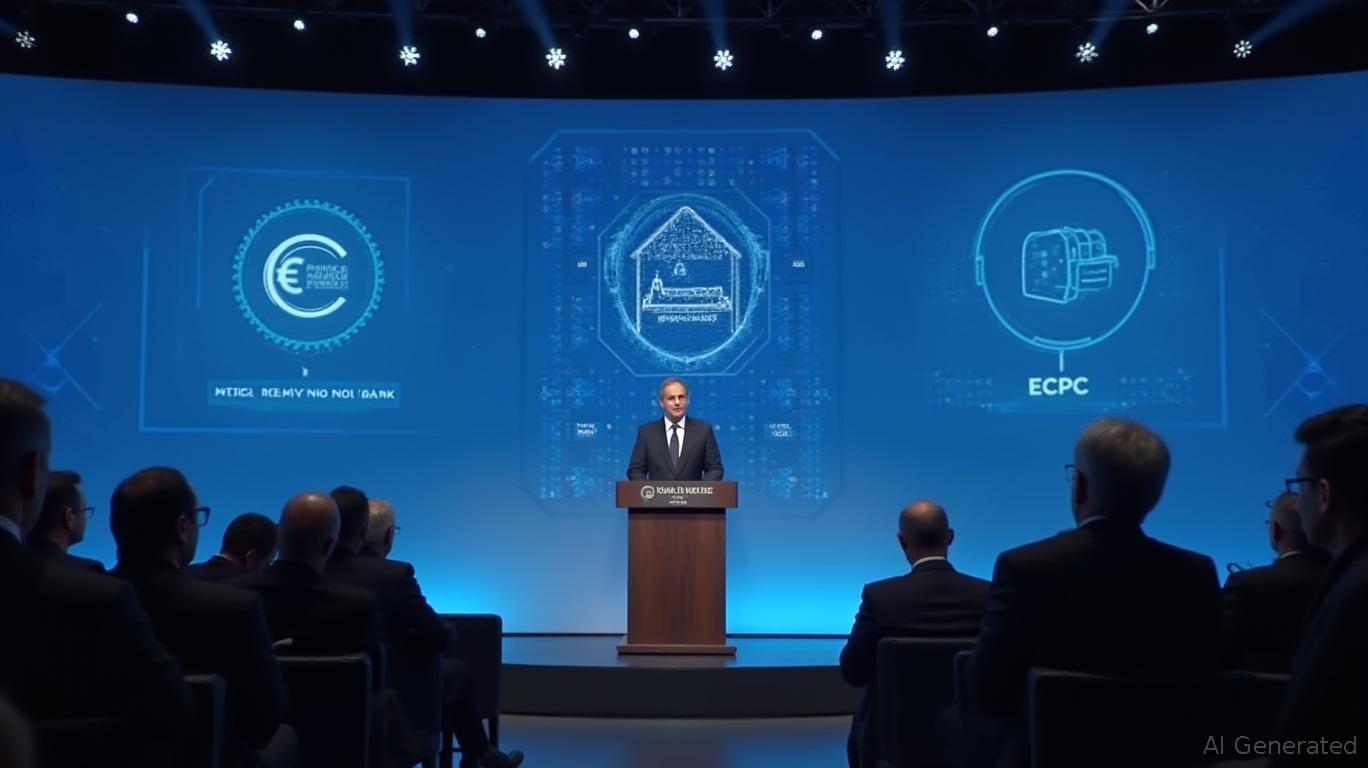AInvest Newsletter
Daily stocks & crypto headlines, free to your inbox
The European Central Bank (ECB) has announced its commitment to launching a digital euro by October 2025. This initiative is part of a broader strategy to integrate distributed ledger technology (DLT) into the financial system, ensuring that central bank money can be used to settle transactions on DLT platforms. The ECB's Governing Council has approved two sets of work that will use central bank money to settle DLT transactions. This move is significant as it aims to modernize the financial infrastructure while maintaining the stability and security of the euro.
The ECB's plan involves a dual-track strategy. The first track, known as "Pontes," is a short-term solution that will pilot connections between DLT platforms and the Trans-European Automated Real-time Gross Settlement Express Transfer (TARGET) platform by the end of the third quarter of 2026. This track focuses on creating a bridge between existing systems and DLT platforms, ensuring that transactions can be settled using central bank money. The second track, "Appia," is a long-term approach that aims to create innovative, integrated financial ecosystems. This track will explore the use of on-chain "exploratory cash tokens," which are essentially wholesale central bank digital currency (CBDC), to complete settlements on DLT platforms.
The ECB's decision builds on its exploratory work in 2024, which involved 64 participants conducting over 50 DLT trials and experiments. The results of these trials were published along with the announcement of the dual-track strategy, highlighting the ECB's commitment to thorough research and development in this area. The ECB's digital euro initiative is not only about technological advancement but also about safeguarding Europe's bank-based financial and monetary system. By launching a digital euro, the ECB aims to address some of the risks posed by stablecoins and promote the euro as a global currency.
Christine Lagarde, President of the ECB, leads this project amid financial stability concerns. The digital euro is positioned as a response to financial pressures and is not designed as a crypto-asset. The ECB emphasizes that the digital euro would not be a crypto-asset, differentiating it from blockchain-based cryptocurrencies. This initiative seeks to offer a stable payment solution without the volatility associated with crypto-assets.
Piero Cipollone, a member of the ECB board, maintains open communication about the project. The private sector is also involved, contributing to infrastructure discussions. The ECB ensures financial stability with this initiative. Market reactions show limited impact on crypto-assets like BTC and ETH. The ECB assures central issuance, differentiating from blockchain-based cryptocurrencies. Adoption rates indicate skepticism, with only a third of Europeans willing to use it, according to a recent ECB report.
Financial implications include the challenge of maintaining stability amid reported central bank losses. Politically, this project emphasizes sovereign control over a decentralized model, seeking to restore trust in monetary policy within the EU. Forecasts suggest potential outcomes in regulatory practices and technological advancements. The ECB aims to meet high privacy standards through centralized oversight, contrasting the decentralized nature of crypto-assets. This could reshape views on digital currencies.

Quickly understand the history and background of various well-known coins

Dec.02 2025

Dec.02 2025

Dec.02 2025

Dec.02 2025

Dec.02 2025
Daily stocks & crypto headlines, free to your inbox
Comments
No comments yet